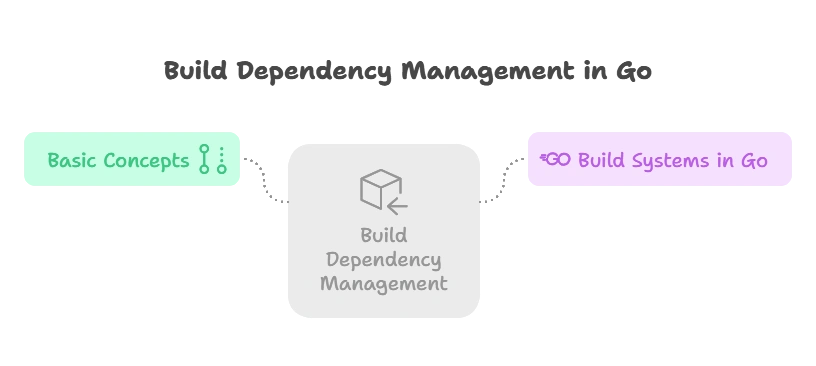Build Dependency Management
Build dependency management in Go refers to the process of managing dependencies required for building and compiling Go programs. This chapter will explore various aspects of build dependency management in Go, starting from the basics to advanced techniques, ensuring a thorough understanding of the topic.
Understanding Build Dependency Management
Basic Concepts
Build dependency management involves identifying and resolving dependencies necessary for compiling and building Go programs. Dependencies can include external libraries, packages, or modules required by the project.
Build Systems in Go
Go provides built-in tools like go build, go install, and go run for compiling and running Go programs. These tools automatically handle dependency management by fetching and resolving dependencies as needed.

Dependency Resolution in Go
Module Dependency Resolution
With the introduction of Go modules, dependency resolution has become more streamlined. Go modules automatically manage dependencies by tracking module versions and fetching them as required.
Dependency Versions
Go modules use semantic versioning (SemVer) to specify version constraints for dependencies. Version constraints ensure that the project uses compatible versions of dependencies.
Working with Build Dependencies
Declaring Build Dependencies
Build dependencies are declared in the go.mod file using the require directive. This specifies the module path and version constraints for each dependency.
module example.com/myproject
require (
github.com/pkg/errors v0.9.1
github.com/gorilla/mux v1.8.0
)
Handling Transitive Dependencies
Go modules automatically handle transitive dependencies, ensuring that all dependencies required by the project are fetched and resolved recursively.
Vendor Directory
The vendor directory allows developers to vendor their project dependencies, ensuring reproducible builds. Dependencies placed in the vendor directory are used instead of those fetched from the module cache.
Build Tags
Build tags are special comments in Go source files that control the inclusion or exclusion of code during the build process. They can be used to conditionally compile different parts of the code based on the build environment or target platform.
// +build linux darwin
package main
import "fmt"
func main() {
fmt.Println("This will only be compiled on Linux and Darwin platforms")
}
Handling Transitive Dependencies
Go modules automatically handle transitive dependencies, ensuring that all dependencies required by the project are fetched and resolved recursively.
Build dependency management is a critical aspect of Go programming, ensuring that projects can be compiled and built reliably. By understanding the principles of build dependency management, developers can create robust and maintainable Go programs that meet the needs of their projects. Happy coding !❤️
